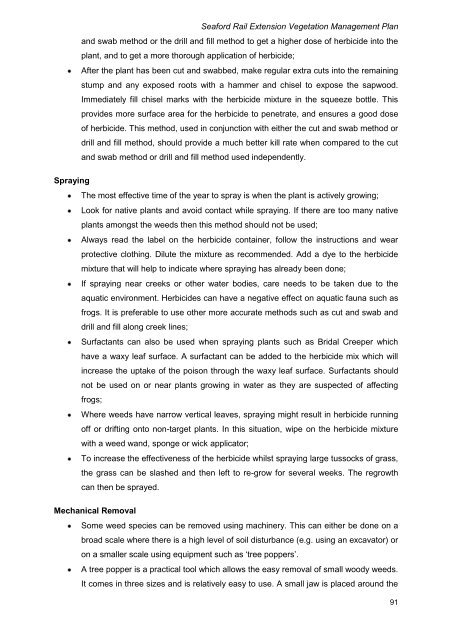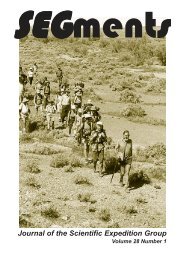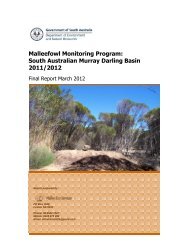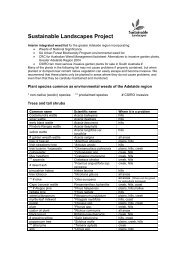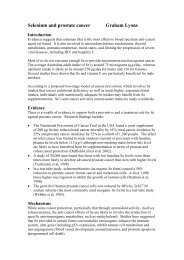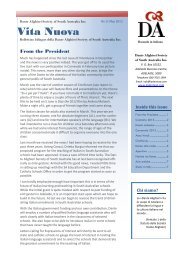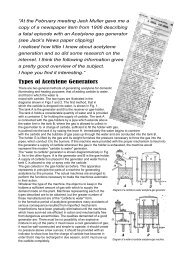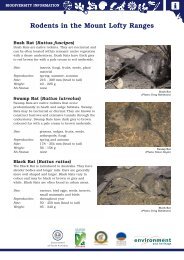Seaford Rail Vegetation Management Plan - Communitywebs.org
Seaford Rail Vegetation Management Plan - Communitywebs.org
Seaford Rail Vegetation Management Plan - Communitywebs.org
Create successful ePaper yourself
Turn your PDF publications into a flip-book with our unique Google optimized e-Paper software.
<strong>Seaford</strong> <strong>Rail</strong> Extension <strong>Vegetation</strong> <strong>Management</strong> <strong>Plan</strong><br />
and swab method or the drill and fill method to get a higher dose of herbicide into the<br />
plant, and to get a more thorough application of herbicide;<br />
After the plant has been cut and swabbed, make regular extra cuts into the remaining<br />
stump and any exposed roots with a hammer and chisel to expose the sapwood.<br />
Immediately fill chisel marks with the herbicide mixture in the squeeze bottle. This<br />
provides more surface area for the herbicide to penetrate, and ensures a good dose<br />
of herbicide. This method, used in conjunction with either the cut and swab method or<br />
drill and fill method, should provide a much better kill rate when compared to the cut<br />
and swab method or drill and fill method used independently.<br />
Spraying<br />
The most effective time of the year to spray is when the plant is actively growing;<br />
Look for native plants and avoid contact while spraying. If there are too many native<br />
plants amongst the weeds then this method should not be used;<br />
Always read the label on the herbicide container, follow the instructions and wear<br />
protective clothing. Dilute the mixture as recommended. Add a dye to the herbicide<br />
mixture that will help to indicate where spraying has already been done;<br />
If spraying near creeks or other water bodies, care needs to be taken due to the<br />
aquatic environment. Herbicides can have a negative effect on aquatic fauna such as<br />
frogs. It is preferable to use other more accurate methods such as cut and swab and<br />
drill and fill along creek lines;<br />
Surfactants can also be used when spraying plants such as Bridal Creeper which<br />
have a waxy leaf surface. A surfactant can be added to the herbicide mix which will<br />
increase the uptake of the poison through the waxy leaf surface. Surfactants should<br />
not be used on or near plants growing in water as they are suspected of affecting<br />
frogs;<br />
Where weeds have narrow vertical leaves, spraying might result in herbicide running<br />
off or drifting onto non-target plants. In this situation, wipe on the herbicide mixture<br />
with a weed wand, sponge or wick applicator;<br />
To increase the effectiveness of the herbicide whilst spraying large tussocks of grass,<br />
the grass can be slashed and then left to re-grow for several weeks. The regrowth<br />
can then be sprayed.<br />
Mechanical Removal<br />
Some weed species can be removed using machinery. This can either be done on a<br />
broad scale where there is a high level of soil disturbance (e.g. using an excavator) or<br />
on a smaller scale using equipment such as „tree poppers‟.<br />
A tree popper is a practical tool which allows the easy removal of small woody weeds.<br />
It comes in three sizes and is relatively easy to use. A small jaw is placed around the<br />
91


